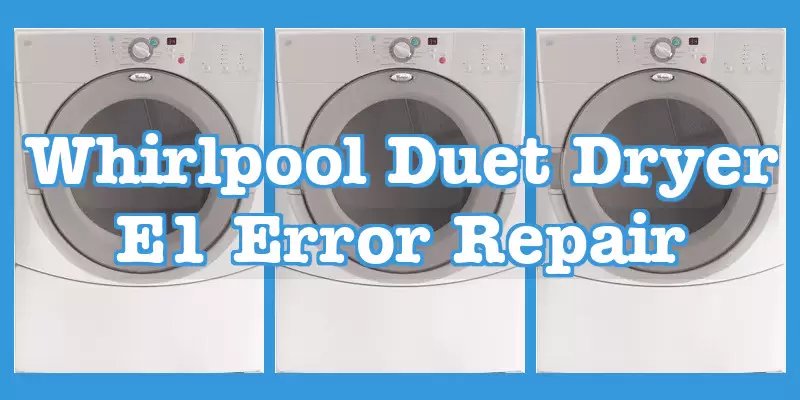
You might be wondering, “Can resetting really be the magic button that solves my dryer problems?” Think of it as rebooting your computer when it behaves erratically. Sometimes, it just needs a little break to sort itself out. A reset can clear minor glitches and help the dryer recalibrate. However, resetting isn’t a cure-all. If there’s a deeper issue, like a malfunctioning component, a simple reset might not do the trick. But it’s definitely a great first step and can sometimes be the fix you need.
Understanding the E1 Error Code
Before diving into solutions, let’s dig a little deeper into what the E1 error code signifies for your Whirlpool dryer. The E1 error is commonly associated with the thermistor, which is like the thermostat of your dryer. Just as a faulty thermostat might cause your home’s HVAC system to go haywire, a problematic thermistor can confuse your dryer about its internal temperatures.
Imagine trying to bake a cake with a temperamental oven. Sometimes it gets too hot, burning the cake, while other times it doesn’t heat up enough, leaving it raw. Similarly, a dryer that can’t properly gauge its temperature can’t dry clothes effectively. This is what makes addressing the E1 error important—not just for fixing a current issue, but for preventing future problems.
Though the thermistor is the main suspect when you see E1, other issues can also trigger this code, like wiring problems or issues with the control board. This is why resetting the dryer serves as an effective first course of action—it’s quick, easy, and doesn’t involve poking around with tools right away.
Steps to Reset Your Whirlpool Dryer
Resetting your Whirlpool dryer is often simpler than you’d expect, akin to performing a “soft reset” on your phone. Here’s how you can give it a go: First, ensure the dryer is empty and turned off. Next, unplug the dryer from the power outlet. If it’s hard to reach, you might consider switching off the circuit breaker for that appliance.
Leave the dryer unplugged or the circuit off for about 5 minutes. This downtime allows any lingering electric charge in the dryer’s system to dissipate, similar to letting a racing mind return to calmness with a moment of meditation. Once the waiting period is over, reconnect the appliance to the power source and turn it back on.
Fire it up with a short drying cycle to check if the E1 error persists. If the error has vanished, fantastic—your reset worked like a charm, akin to hitting the refresh button on a web page. If the code remains, it’s time to consider other solutions since the reset didn’t tackle the underlying issue.
When Resetting Isn’t Enough
So, what if resetting doesn’t rid you of that pesky E1 error? This might indicate a more serious issue with the dryer that needs addressing. Remember, a reset is like putting a band-aid on a scratch—it helps minor issues but isn’t a cure for all wounds. If the error persists, you’ll need to dig deeper.
First, examine the thermistor. This part typically resides near the blower housing. You may need a multimeter to check its resistance. If you’ve never used one before, don’t fret—it’s as straightforward as using a basic calculator. A functioning thermistor should have a resistance reading within its specified range. If it’s off, replacing the thermistor is a good next step.
Alternatively, if the thermistor seems fine, consider inspecting the dryer’s control board or internal wiring. This requires a bit more technical prowess, so enlisting professional help might be wise. Think of it like calling a plumber for a leaky faucet—it’s best left to those with the right tools and expertise.
Preventive Tips for Avoiding Future Errors
To keep that E1 error at bay in the future, a little preventive care can go a long way. First, regularly clean your dryer’s lint filter. Much like regular oil changes keep a car running smoothly, cleaning the lint filter ensures the dryer vents properly, reducing strain on its components.
Consider scheduling periodic maintenance checks. While we often wait until something breaks before calling for help, regular inspections can catch issues early—like preventing cavities with dental cleanings. Also, try not to overload your dryer. Overloading can strain the motor and heating elements, potentially leading to issues that trigger error codes.
In the end, whether or not resetting fixes your E1 error might depend on the root cause. However, starting with a reset is a cost-effective, low-effort troubleshooting step. If it works, you’ll save time and hassle. If not, at least you’ve ruled out simple glitches and can focus on other potential fixes. Happy drying!